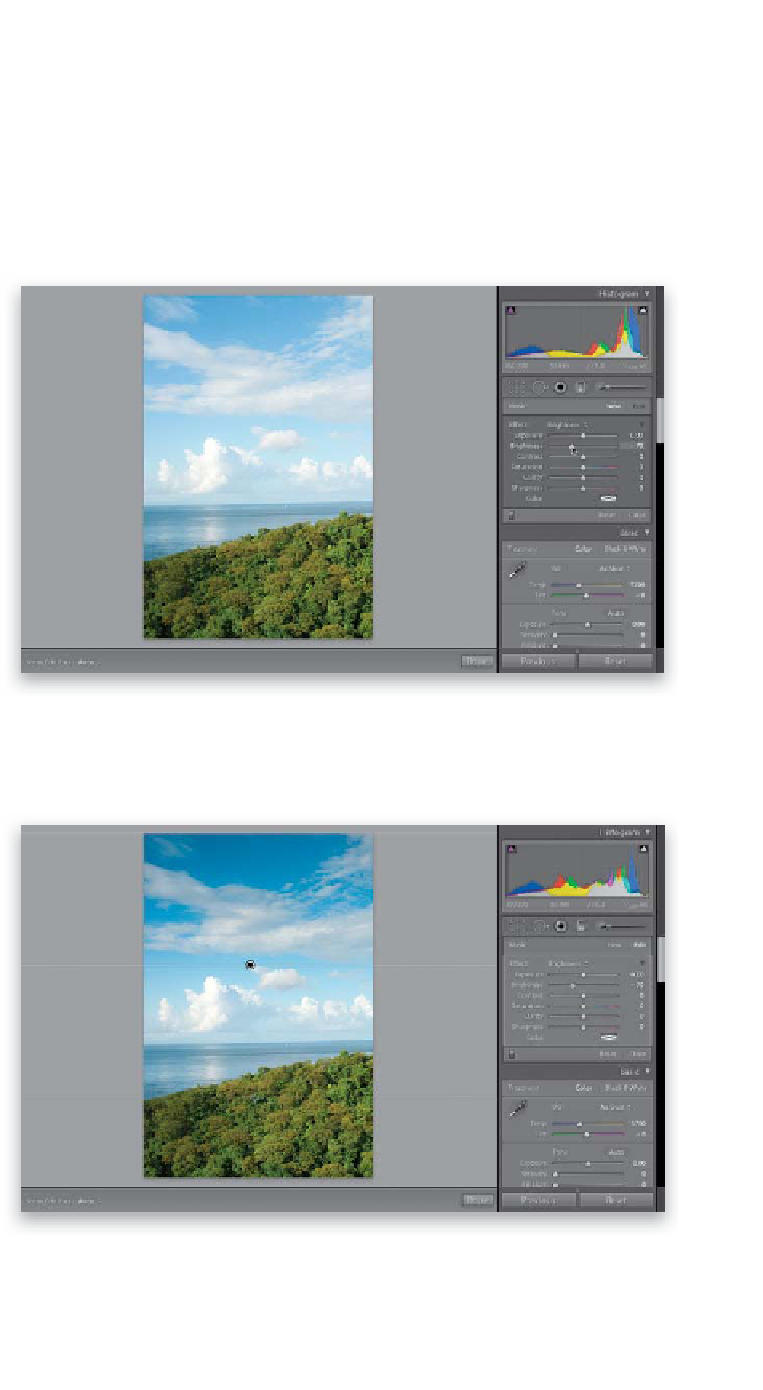Graphics Programs Reference
In-Depth Information
The Graduated Filter (which is actually a tool) lets you recreate the look of a
traditional neutral density gradient filter (these are glass or plastic filters that are
dark on the top and then graduate down to fully transparent). They're popular
with landscape photographers because you're either going to get a perfectly exposed
foreground or a perfectly exposed sky, but not both. However, the way Adobe
implemented this feature, you can use it for much more than just neutral density
gradient filter effects (though that probably will still be its number one use).
Step One:
Start by clicking on the Graduated Filter
tool in the toolbox (it's just to the left of
the Adjustment Brush, or press
M
), near
the top of the right side Panels area. When
you click on it, a set of options pops down
that are similar to the effects options of
the Adjustment Brush (shown here).
Here we're going to replicate the look of a
traditional neutral density gradient filter
and darken the sky. Start by choosing
Brightness
from the Effect pop-up menu
and then drag the Brightness slider to the
left to -70 (as shown here). Just like with
the Adjustment Brush, at this point we're
just kind of guessing how dark we're going
to want our gradient, but we can darken
or lighten it later.
Step Two:
Press-and-hold the Shift key, click on the
top center of your image, and drag straight
down until you nearly reach the bottom
quarter of the photo (the reason I'm drag-
ging this low is because our horizon line is
near the center of the photo. You can see
the darkening effect it has on the sky and
its reflection in the water, and the photo
already looks more balanced). You might
need to stop dragging the gradient before
it reaches the horizon line, if it starts to
darken your properly exposed foreground.
By the way, the reason we held the Shift key
down was to keep our gradient straight
as we dragged. Not holding the Shift key
down will let you drag the gradient in
any direction.













